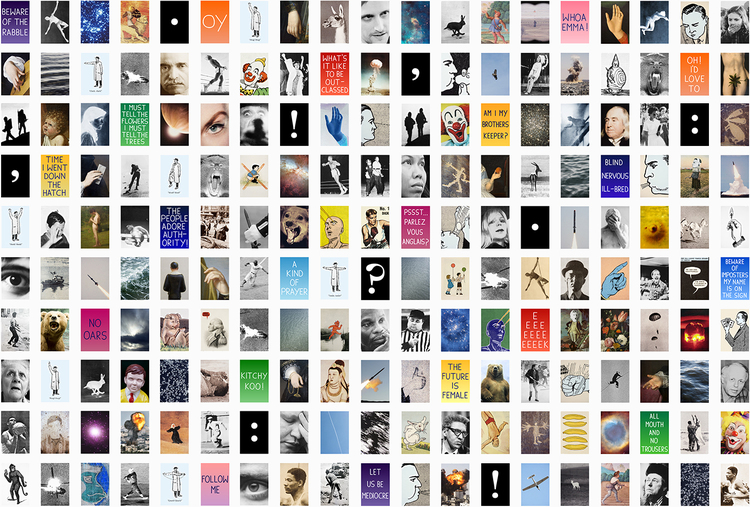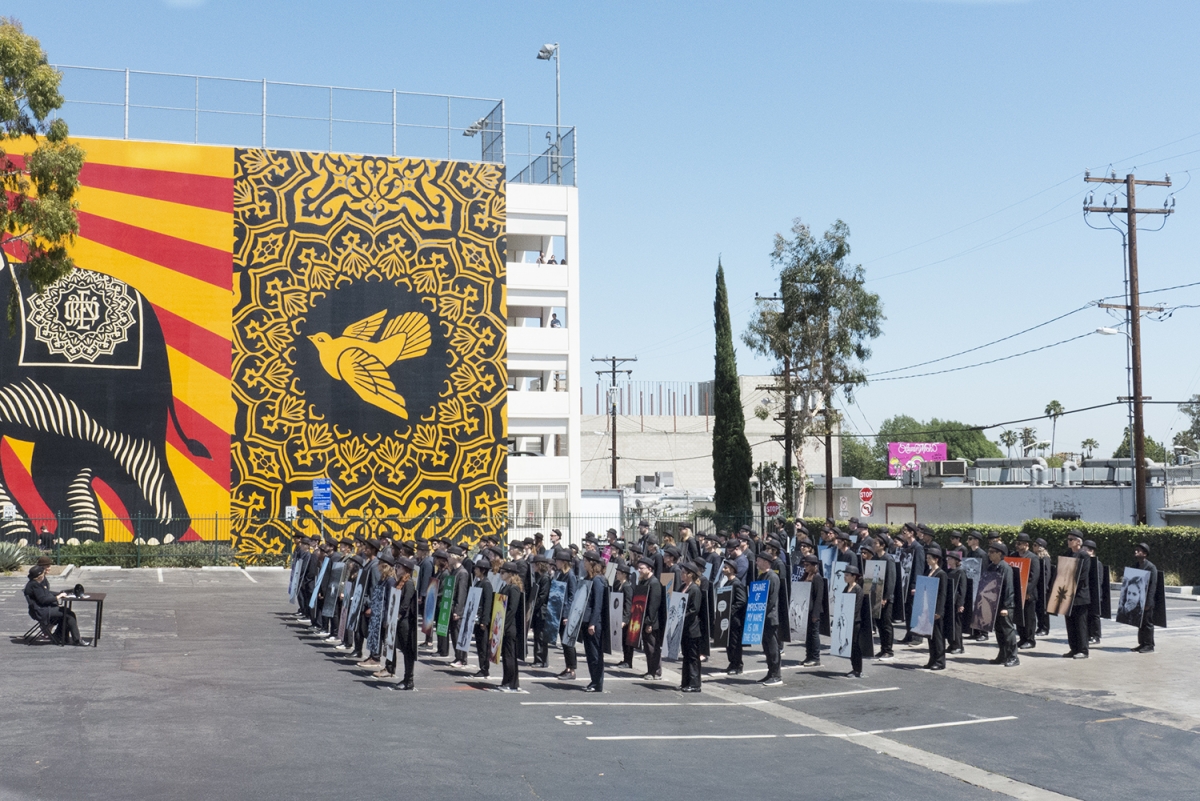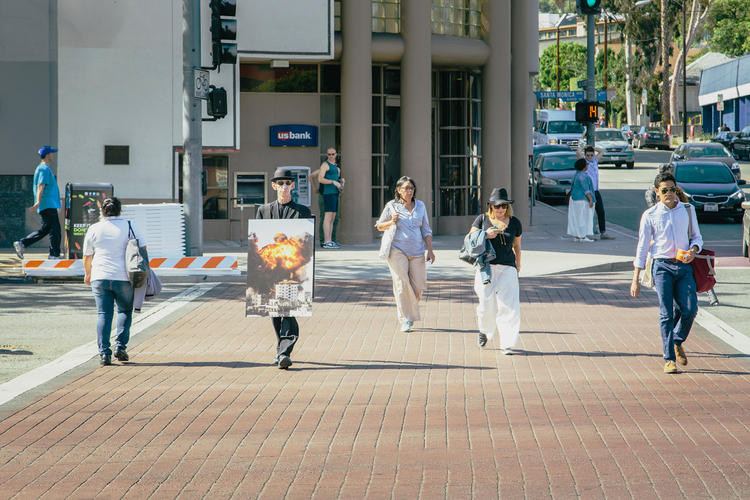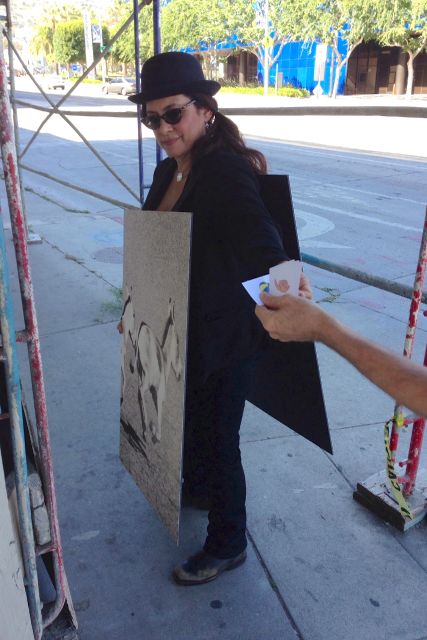The City of West Hollywood is like no other city in the world. Located in the heart of metropolitan Los Angeles, the city was incorporated in 1984 by a unique collaboration of people including LGBT activists and advocates for affordable housing. At only 1.9 square miles, West Hollywood is a robust economic and cultural center instilled with idealism, creativity, and innovation. A spirit of community activism and civic pride thrives in West Hollywood for many of its approximately 35,000 residents. The city has a strong progressive political voice and is filled with rich history.
100 Walkers, West Hollywood was commissioned by the City of West Hollywood and its Arts and Cultural Affairs Commission for the Art on the Outside Program, the City’s public art program that brings temporary art into the streets, parks, and medians. The unscripted, time-based performance piece, created by artist Richard Kraft, took place on April 18, 2015 from 2:00-5:30pm; it was an event that was part of the City of West Hollywood’s 30th anniversary of cityhood.
Kraft's primary influence for the Walkers series was the non-conformist Stanley Green (aka the “Protein Man”), a “human billboard” who walked Oxford Street in London for 25 years. His placard advocated “Less Lust, By Less Protein: Meat Fish Bird; Egg Cheese; Peas Beans; Nuts. And Sitting.” Kraft first encountered him as a young child and grew to admire his courage and discipline as well as the incongruity of his message, mingling as it did with the commercial cacophony of Oxford Street.
At the time, Kraft said, “My hope is that the piece will shift viewers out of their everyday space and into a sense of wonder, make them think about things in a different way. I want the sandwich boards to provoke laughter, surprise, contemplation. I think the range of images will elicit many different responses—a microcosm of what it is to be a human being.”
The piece began with all 100 walkers standing silently in a grid in the El Tovar parking lot adjacent to West Hollywood Park. Each wearing a dark suit, bowler hat, and a sandwich board—with unique visual and verbal lexica, front and back, tailored to be in conversation with West Hollywood’s history and communities — walked pre-determined routes traversing the entire city.

The images and texts for the sandwich boards for 100 Walkers, West Hollywood, the largest ever of Kraft’s Walkers series, were specifically tailored to be in conversation with West Hollywood’s history and communities. Various lexica include aphorisms, portraits, animals, painted hand gestures, imagery from children's books, photographs of the elemental, war and resistance, dissidents and activists. Subverting a form traditionally associated with advertising (whether for a product or ideology), the boards in this project had nothing to sell. Instead they invite multiple associations and connections from anyone who encountered them.
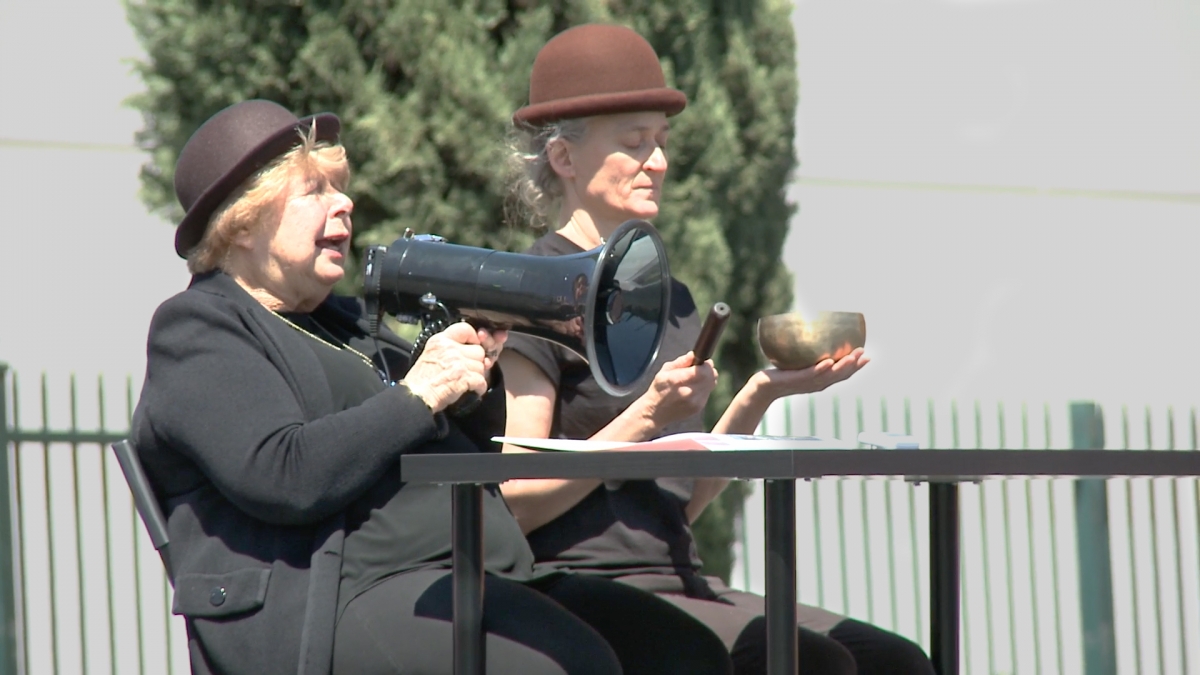
Once all one hundred walkers were in place, the maestra of ceremonies Marjorie Perloff began reading the
“start phrases” from the score to release one walker at a time at approximately five second intervals. The phrases were all slang terms for the body and its parts. The score began with two terms for the body itself and then moved from the head all the way down to the toes.
Once the walkers dispersed, they could be seen all over West Hollywood, particularly along all the main thoroughfares: Sunset, Santa Monica, Melrose, Beverly, San Vicente, Doheny, La Cienega, Crescent Heights and Fairfax.
Collectively, the walkers formed an unusual army of incongruities and juxtapositions which injected humor, commentary, distortion, as well as glimpses of parallel moments in space and time. Individually, each walker captured the attention of most passersby (particularly those who are driving) for just a blink, enough to interrupt daily life and shift the viewer's awareness of their world.
During the piece performers remained silent. Interaction with inquisitive passersby was confined to the handing out of a
business card.
The walk ended when all walkers returned to their starting point at the El Tovar parking lot, standing for one minute to finish their performance.
Now living in updstate New York,
Richard Kraft was born and raised in London, England. His multidisciplinary pieces engage with public spaces, and converse with literary and narrative elements. His new book,
"Here Comes Kitty: A Comic Opera," was published by Siglio Press in April 2015.
Tourists from all over the globe visit West Hollywood for its iconic destinations such as The Sunset Strip and historic Route 66. The city’s thriving creative and entertainment communities set trends in design, dining, music, fashion, art, and architecture. More of the City’s arts and culture programs can be found at
www.weho.org/arts.


